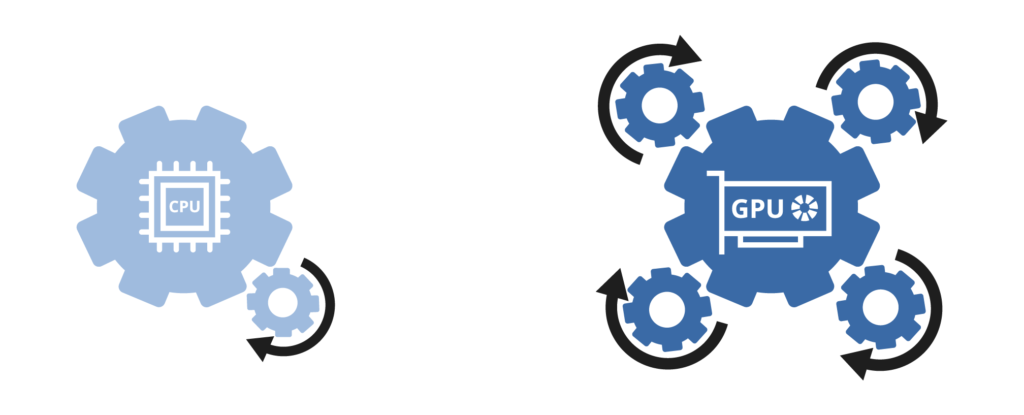Data science has become a necessity for companies looking for innovative and efficient ways of solving complex business problems. As the world becomes more data-centric, trends in data science technologies and practices continue to emerge and evolve. Continual education on cutting edge data science applications can help optimize an organization’s operations, internal processes, and bottom line.
Here are three emerging data science trends that you and your company should be exploring to maximize insights and profitability.

Natural Language Processing
Residing at the intersection of linguistics and AI, Natural Language Processing (NLP) makes computer programs capable of analyzing, predicting, and deriving meaning from human languages. The majority of AI algorithms in commercial use today are designed for modeling structured data, which is data that conforms to specific predefined formats. However, it is generally accepted that 80% to 90% of all data generated daily is unstructured. While there are many types of unstructured data, text and audio containing human language (email, webpages, text documents, social media posts, PDFs, audio recordings, etc.) account for a significant portion. For example:
- Health insurers are using NLP to extract potential diagnosis information from scanned copies of patient medical charts and electronic medical records
- Call centers and sales desks are applying NLP to recorded phone conversations to assess the effectiveness of representatives and sales people, as well as to generate metrics of customer sentiment and satisfaction
- Hedge funds and financial traders are using NLP to build trading algorithms capable of acting quickly on insights from breaking news, corporate announcements, natural disasters, political developments, etc.
NLP can also help companies to improve upon their existing data practices by automating data collection as well as augmenting their modeling datasets with additional information gleaned from unstructured data.

Parallel Processing with GPUs
To understand what the GPU (Graphical Processing Unit) does, it is worthwhile to distinguish it from the CPU (Central Processing Unit). The computer or mobile device you are using right now uses its CPU to operate, which handles much of the computer’s necessary work until it comes to rendering graphics; that is when the work is handed over to the GPU. While GPUs were originally used exclusively for rendering high-quality images and videos, particularly in gaming systems, they have been shown to provide fast parallel processing of data versus CPUs, which provide fast serial data processing. The GPUs’ ability to quickly process data, in parallel, makes it ideal for the kinds of processing required of AI workloads.
The still-burgeoning area of Artificial Intelligence, which includes Machine Learning and Natural Language Processing requires computer systems to “think” and “learn” while processing data as quickly and efficiently as possible. GPUs’ strength in parallel processing for NLP allows companies to create models for fast and repeatable image, sound, text, and data classification, perception, learning, and analysis. GPUs are a natural fit for companies that have image classification and recognition workloads.
- Retailers are adopting image searches to allow customers to find products they are looking for by image, instead of by text
- Defense agencies and security companies are using this technology to find and recognize people in real-time on their systems
- Medical science benefits from image recognition to help radiologists find anomalies in medical images more quickly
- Banks and financial institutions use GPUs to verify that pictures of checks taken on a phone for mobile banking are not fraudulent
Adoption of GPU technology on self-hosted infrastructure is tricky due to fast-evolving technology. Because new generation GPUs are released every year, and new models are introduced every few years, a cutting edge GPU does not stay top-of-the-line for long, and it is important to understand how different GPUs handle required workloads. This, along with the expertise needed to fully utilize GPU technology creates an obstacle for some organizations to make and maintain the investment in GPU technology, which is why wide adoption of the technology has been relatively slow. Fulcrum provides access to GPU machines in its Agile Analytics Lab environment for experimentation.

Omnichannel Insight Automation
Many organizations are making use of Google Analytics or other web analytics tools to measure traffic patterns to websites. Simultaneously, most organizations are also keeping track of customer-level marketing campaigns, transactions, and attributes in databases for purposes of execution, fulfillment, and analysis. By combining website analytics with customer campaign, transactional, and attribute data, an organization gains a more holistic view of customer activity which guides refined business operations — ultimately resulting in more effective communications and offers.
In order to blend web and non-web data, organizations often must revise their website design, website analytics tracking software, the structure of their campaigns, and organization of the non-web data that is to be joined with website data. Web analytics tools utilize cookies or a combination of computer and browser attributes to identify unique visitors. This can be combined with personally identifying information through form web submissions, logins, or passthrough identifiers in a personalized URL that brings the visitor to the site. The key is setting up website or campaign design to capture the visitors’ non-web identification online to allow the match of data sources. Importantly, opt-in mechanisms and disclosure prior to collecting and combining such data are of critical importance in order to maintain compliance with US and global privacy regulations.
Once organizations combine these data sources, they can dissect the channel-specific impacts of marketing campaigns on transactions, measure engagement of various customer segments across channels, and enable personalization of content across channels at the customer level for a better, and potentially more profitable, experience.
Keeping up with the Curve
As data science as a whole is continually evolving, it is critical that businesses not only stay up to date with the latest trends, but know which tools are right for their needs. Data science is embedded into the fabric of every business, both big and small. To learn more about how Fulcrum can help your business jump start the deployment of emerging data science trends, contact us today.



